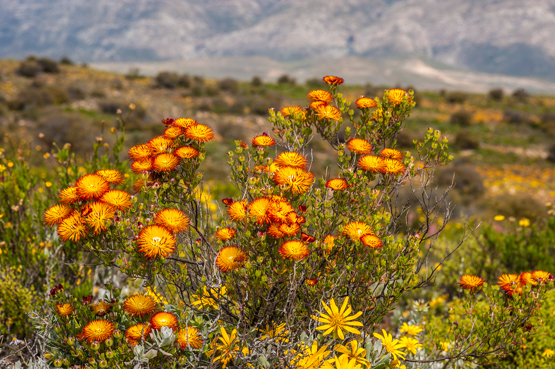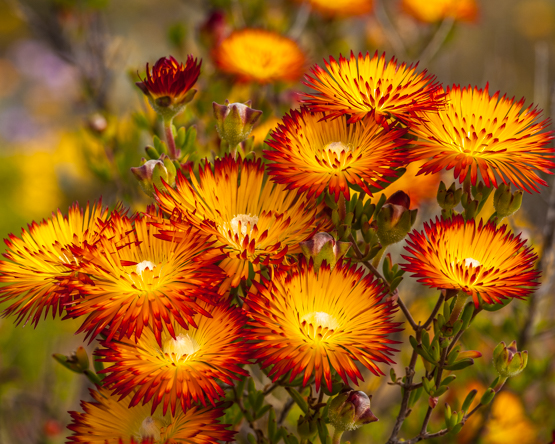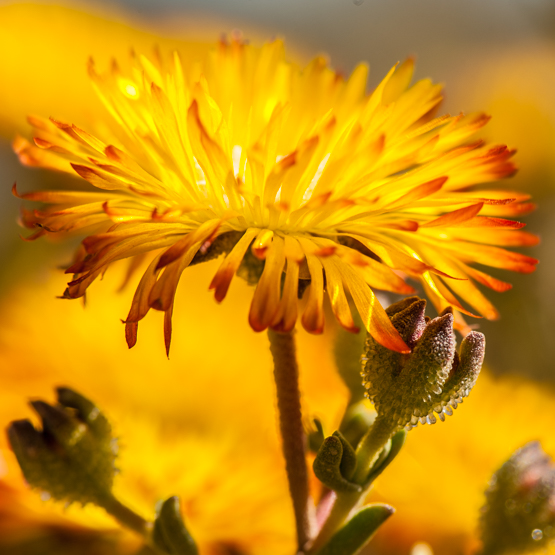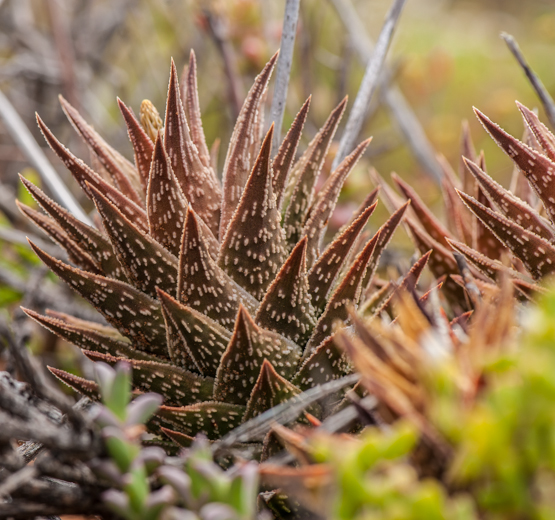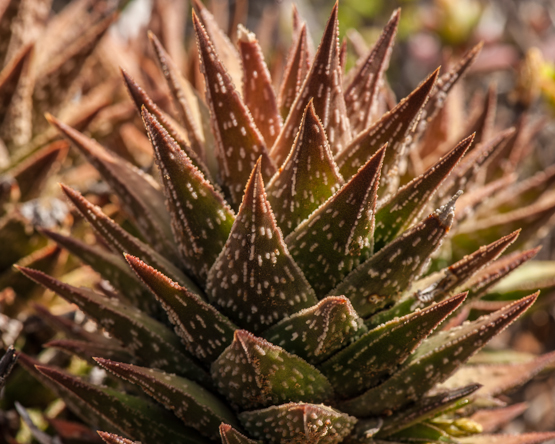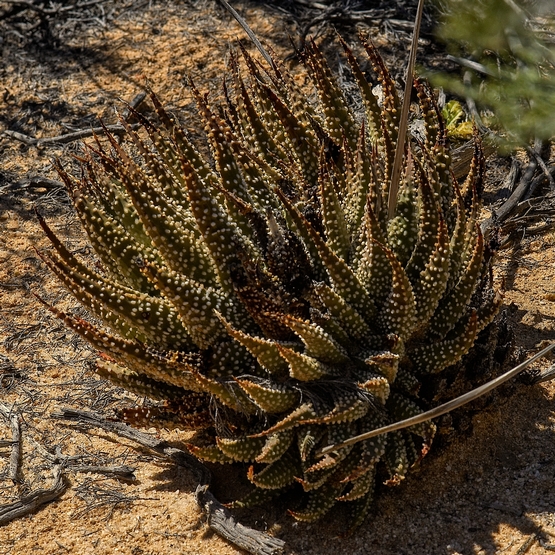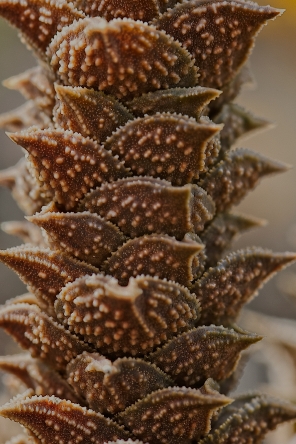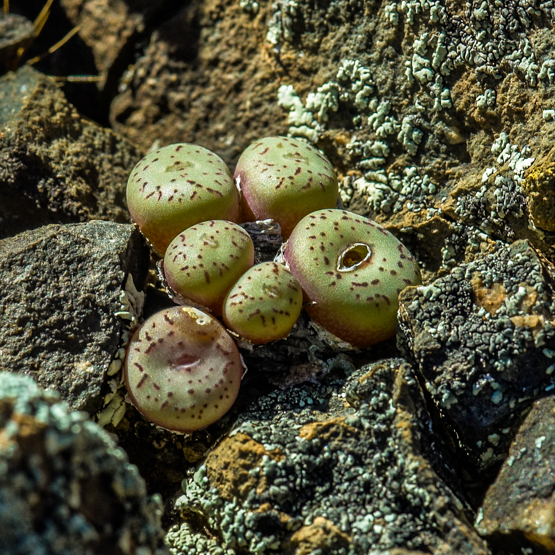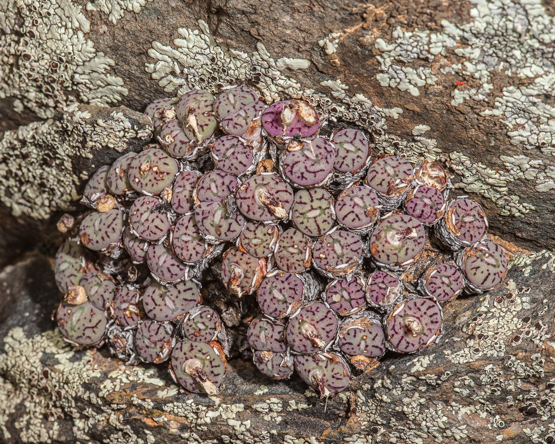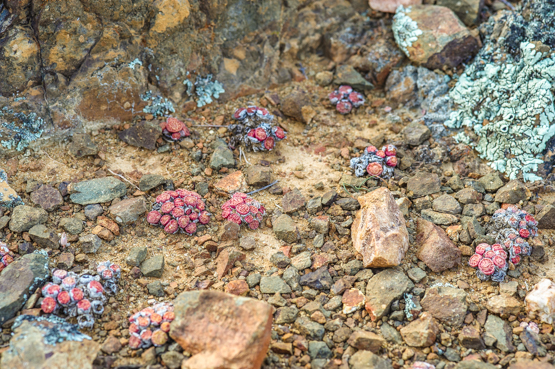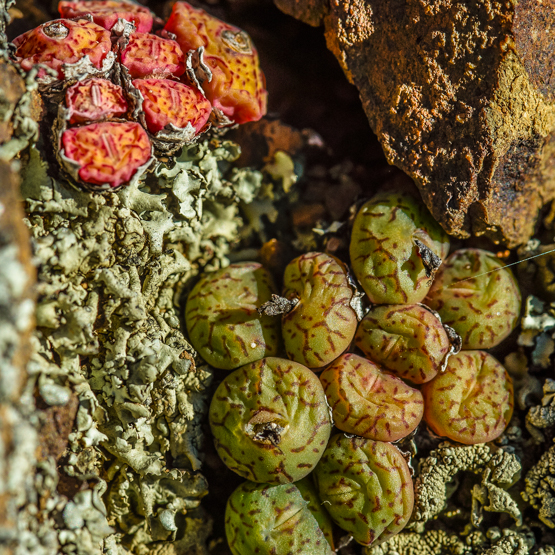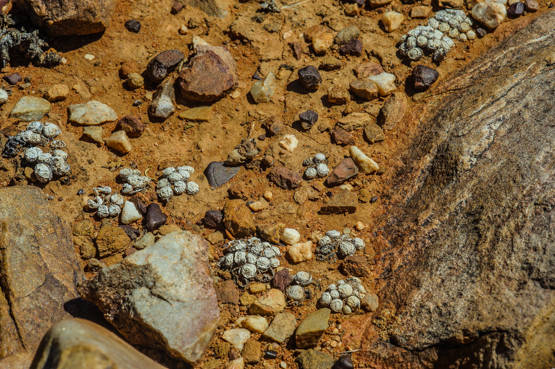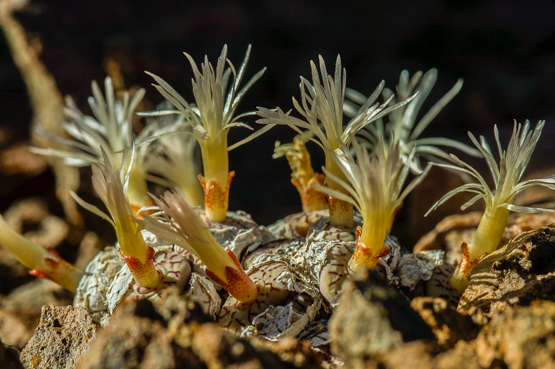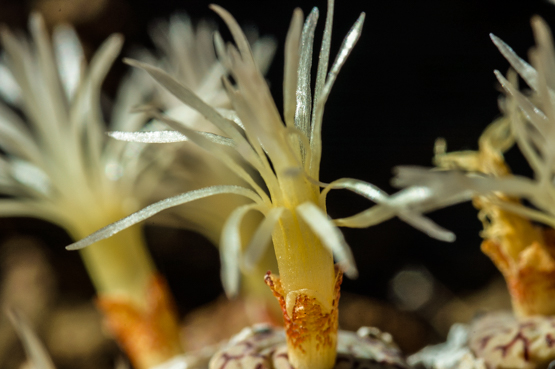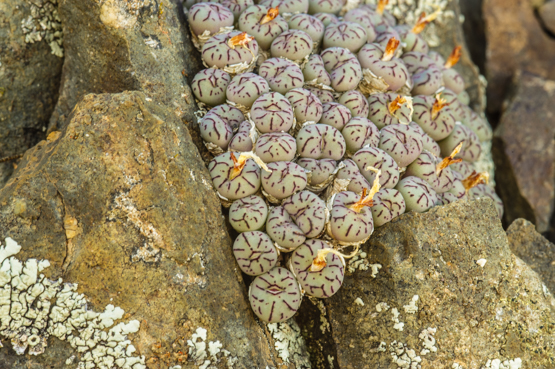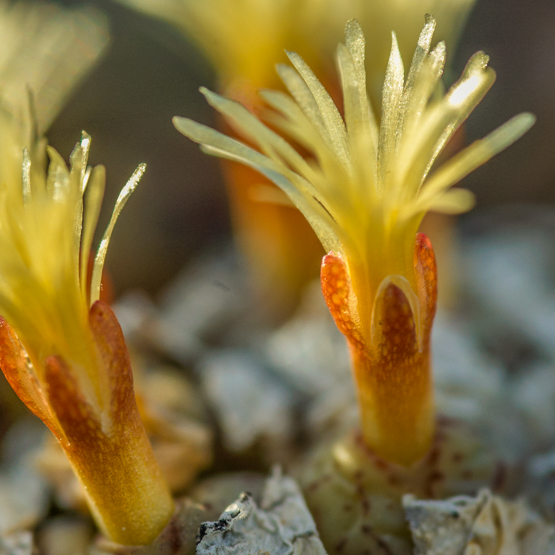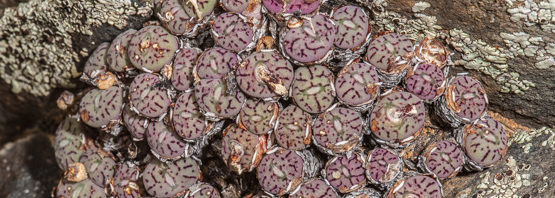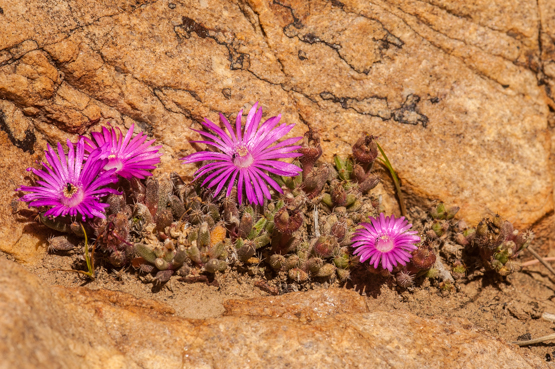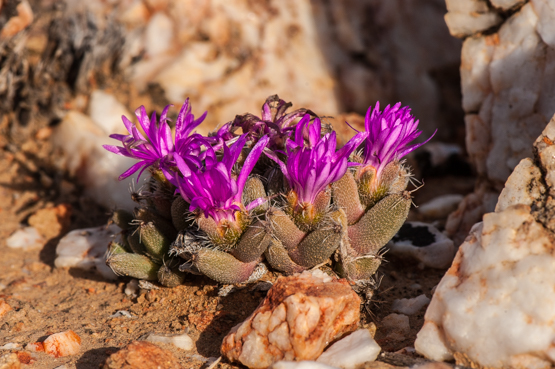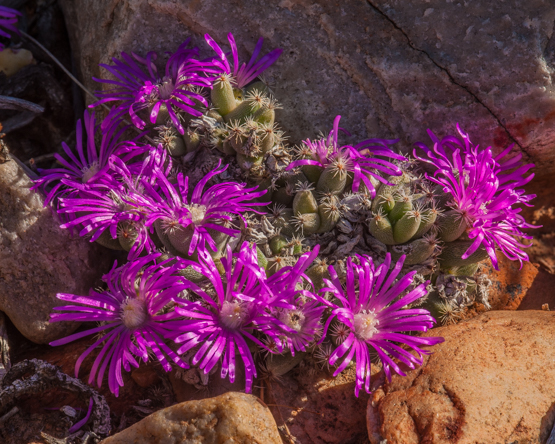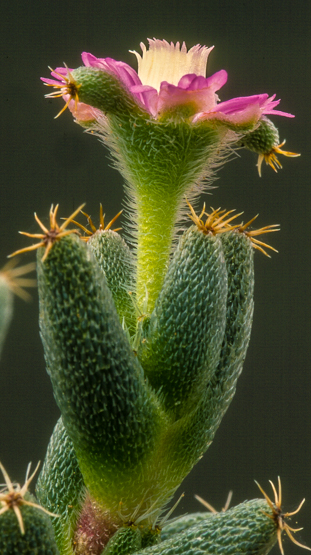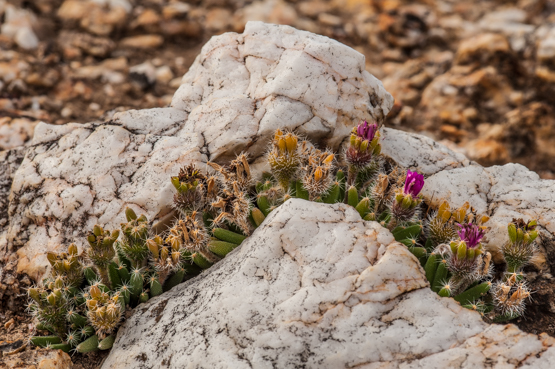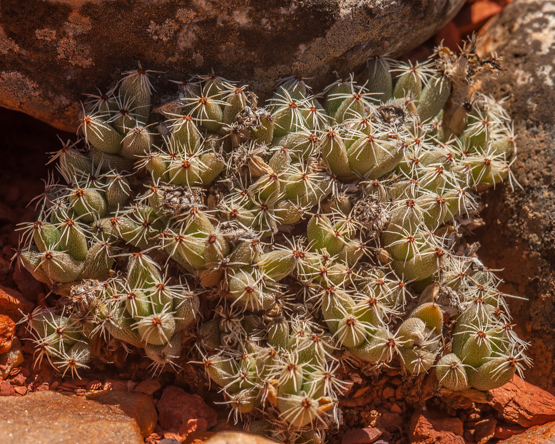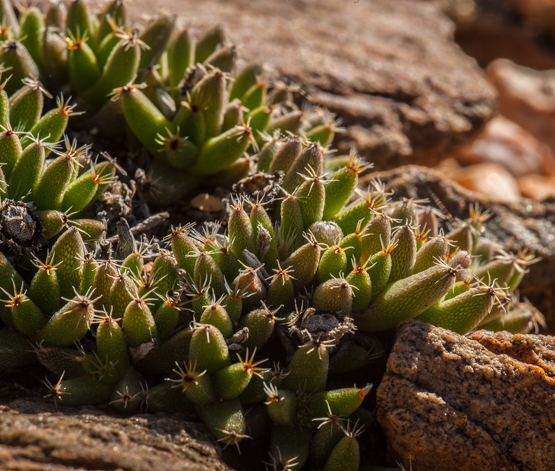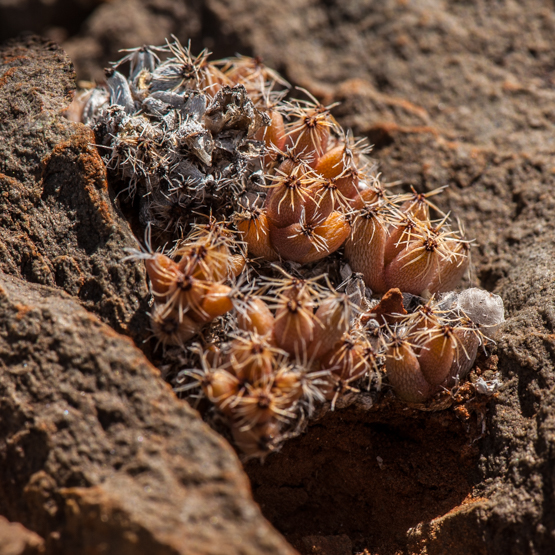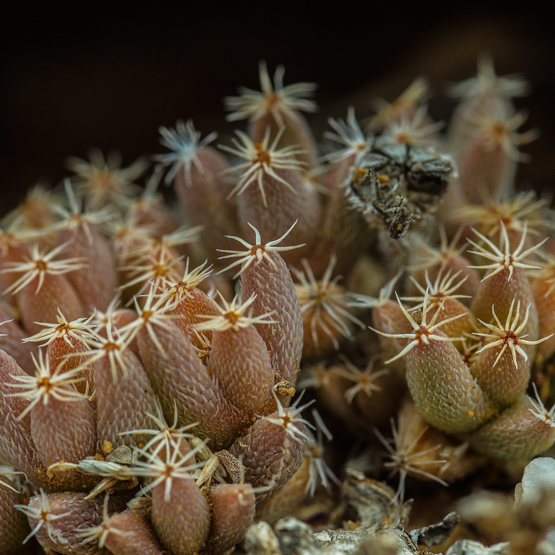This spectacular species forms erect shrubs to 1 m tall and 1.5 m in diameter and is deservedly popular as a garden plant in suitable climates.
They occur in the Little Karoo, mainly in the Ladismith-Montagu area on stony sandy soil. The flowers appear from September through December.
Month: June 2015
Drosanthemum bicolor
xAstroworthia bicarinata (Astroloba corrugata x Haworthia pumila)
A while ago, on a trip from Montagu to the southwest entrance of Anysberg Nature Reserve, friend Marion and I came across a couple of plants we had never seen before.
They grew in a flat area with low shrubs and other plants, including several specimens of Haworthia pumila.
It didn’t require a lot of brain power to assume that the unknown plants were hybrids, with H. pumila as one parent -almost certainly the mother. What the other parent might be remained guess work, because even after a long search in the area, we did not come across a likely candidate.
Last week I was looking up some information for a talk on succulents in the Montagu area that I was asked to give and that search solved the problem of the missing father.
In Haworthia revisited, Bruce Bayer states under H. pumila :”It hybridizes with Astroloba muricata (= A. corrugata, FN)”
In the Illustrated Handbook of Succulent Plants, N. L. Meyer & G. F. Smith mention the genus X Astroworthia with 1 member (xA. bicarinata), remarking: “This is the naturally occurring hybrid Astroloba corrugata x Haworthia margaretifera (= H. pumila, FN)”
The pictures below show the proud parents:
H. pumila and A. corrugata resp.
xAstroworthia bicarinata (Astroloba corrugata x Haworthia pumila)
A while ago, on a trip from Montagu to the southwest entrance of Anysberg Nature Reserve, friend Marion and I came across a couple of plants we had never seen before.
They grew in a flat area with low shrubs and other plants, including several specimens of Haworthia pumila.
It didn’t require a lot of brain power to assume that the unknown plants were hybrids, with H. pumila as one parent -almost certainly the mother. What the other parent might be remained guess work, because even after a long search in the area, we did not come across a likely candidate.
Last week I was looking up some information for a talk on succulents in the Montagu area that I was asked to give and that search solved the problem of the missing father.
In Haworthia revisited, Bruce Bayer states under H. pumila :”It hybridizes with Astroloba muricata (= A. corrugata, FN)”
In the Illustrated Handbook of Succulent Plants, N. L. Meyer & G. F. Smith mention the genus X Astroworthia with 1 member (xA. bicarinata), remarking: “This is the naturally occurring hybrid Astroloba corrugata x Haworthia margaretifera (= H. pumila, FN)”
The pictures below show the proud parents:
H. pumila and A. corrugata resp.
Conophytum minimum (part 3 of 3)
Conophytum minimum (part 3 of 3)
Conophytum minimum (part 2 of 3)
Conophytum minimum (part 1 of 3)
When Adrian Haworth described Conophytum minimum in 1795, it was the smallest known member of the genus Mesembryanthemum (as it was back then). Hence the specific epithet.
It is a member of the section Conophytum – “The original cones and dumplings” as Steven Hammer calls them. As in other members of this section, plants of C. minimum may vary from quite plain and dull to exquisitely marked. This variability has given rise to a long list of synonyms (26 to be exact).
The plants form rather loose mats or compact domes.
The individual bodies are conical to cylindrical, 8-15 (sometimes up to 20) mm long and 10 mm thick, elliptical in outline and with their tops usually truncate (as if cut off). They range in colour from pale green to greyish green and the tops are mottled in various degrees with dark lines and spots.
The flowers are white, pale yellow or pale pink and strongly scented. They appear in autumn (May, June). Although they are described as nocturnal, on cold days they are often open in the morning (up to 10 or 11 am) or late afternoon.
When you want to see the plants in the wild, your best chances are in the Matjiesfontein, Laingsburg, Witteberg area, where they are often locally abundant on shale, sandstone or quartzitic rocks among lichens, often finding shelter in crevices.
The photos in this post and the following two ones, are arranged chronologically so as to give you an idea what the plants look like in different times of the year.
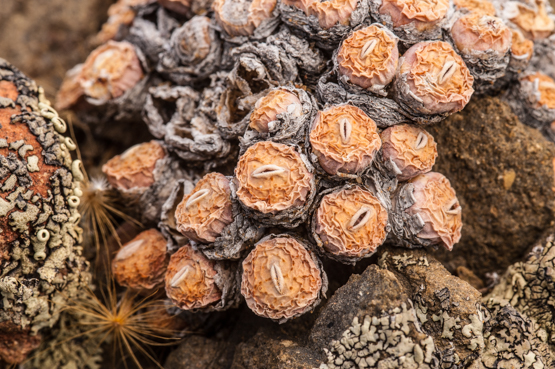
Picture taken 29 Jan. 2012
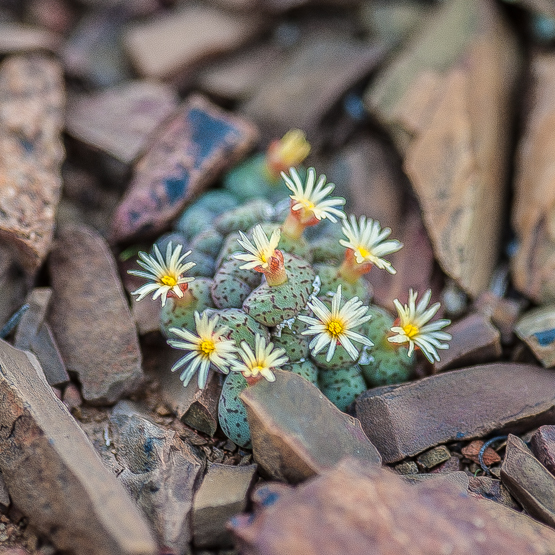
Pictures taken 6 May 2009, around 5.40 PM
Trichodiadema marlothii (part 2 of 2)
Trichodiadema marlothii (part 1 of 2)
In the Montagu area and further to the east and northeast, this species is rather common on quartz patches, in rock crevices and in other stony places. In spite of that, one does not often find it mentioned in the literature.
The species belongs to the group of nicely compact Trichodiademas, of which T. densum is the best known. In the wild, the plants get no taller than 4 cm.
The leaves are beautifully covered in big bladder cells with long points at the tip.
In the description it says that the diadem has 5-10 bristles, but in all the plants I have seen there are about twice as much.
The flowering period is from May through August.
This species can be distinguished from similar ones by the fact that the fruits have 6 compartment, rather than the usual 5.
